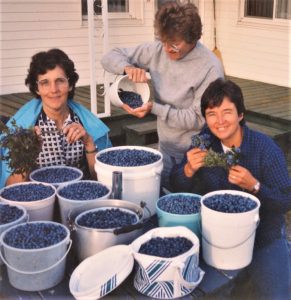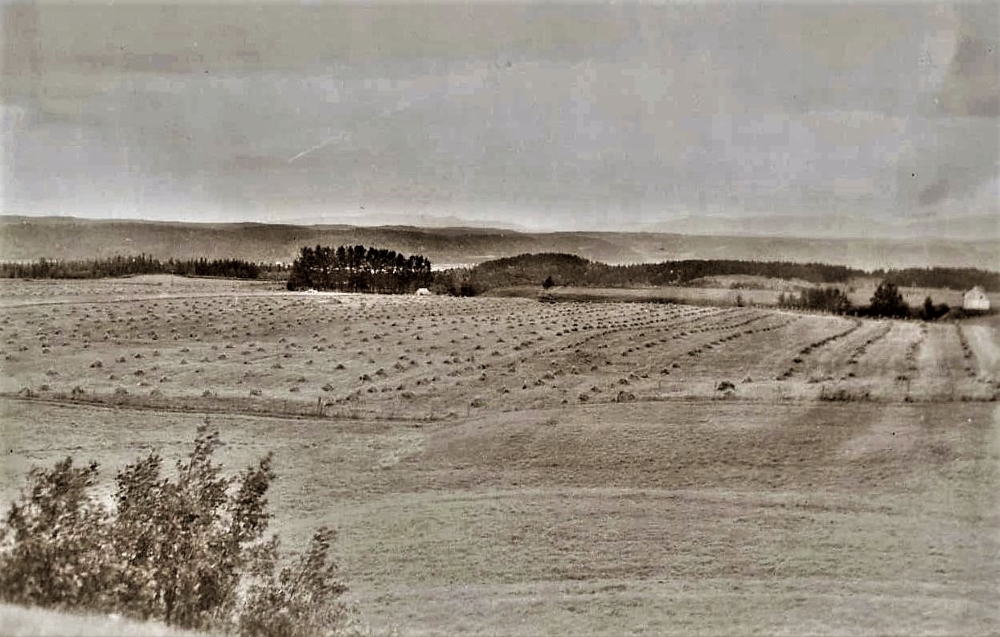A never-ending cycle
The proverb says: “What you sow you reap”. The Sisters pray for plentiful harvests and their prayers are answered, as kilos upon kilos of vegetables are gathered by the “little supplicants” of Rang Saint-Joseph. A great diversity of farm products adorn the tables of the Congregation and nourish numerous young girls. The ability to receive guests and feed the nuns with the fruits of their labour gives the Congregation a great sense of achievement.
The Sisters’ lives harmoniously evolve from one season to the next, to the rhythm of their many and diverse duties. Every spring, they return to the land. In May, the time has come to sow their gardens and plant seed potatoes. In June, it is time to weed and look after the soil. In July, they examine their plants and begin harvesting. In August, they gather the various kinds of berries that grow around the farm.

Sisters contentedly posing with their blueberry harvest. Sisters Murielle Lévesque (Saint-Luc) and Gisèle Boulet (Sister Claude), 1987.
Vast quantities of blueberries, raspberries, and gooseberries are picked. The berries make delicious jams and jellies for breakfast. September is vegetable harvest time: carrots, cabbage, beans, onions, corn. The soil is very fertile, and the Sisters happily harvest the fruits of their labour. In October, it is time to harvest hay and prepare the soil for the following year.
Already two good weeks, the garden has come to life; it withstood the biting cold of winter and appears ready to be raked, and capable of harbouring life. Also, the Sisters stir the black lumps that crumble readily under spades and rakes. The seeds, buried in long, beautiful creases, drink up the water that will make them germinate and become fresh, varied, and delicious nourishment.
From the Annals of Saint-Joseph farm, 1981
When winter sets in, it is time to let the soil rest under the snow. It is also a respite for the farming nuns, until spring at least, when the cycle starts again. Of course, the Sisters who live on the farm have fewer duties, but they still have to care for the hens and cattle. Winter is also a time for contemplation and vegetable storage tasks.



